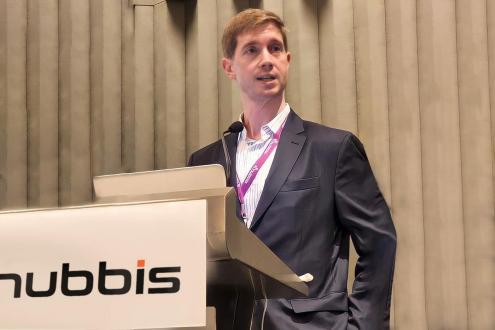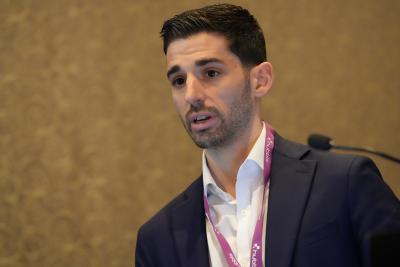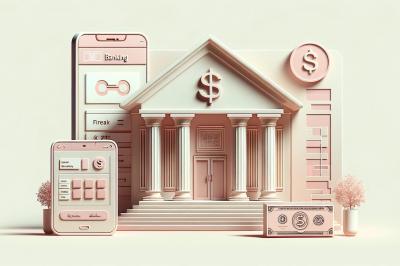Chintai Founder David Packham on how the Wealth Management Industry Can Expand their Digital Assets Proposition

Jun 21, 2022
At the Hubbis Independent Wealth Management Forum of May 11, one of our guests – also a sponsor of the event – gave a fascinating presentation on how private banks and wealth management firms can differentiate themselves by delivering access to the expanding universe of digital assets. We have summarised some of his insights and observations in this brief report.
“I will open by stating that digital assets and tokenisation are increasingly relevant to the wealth management industry globally. I have come armed with a presentation that offers considerable detail, and my mission is to explain how the wealth management players in APAC and beyond can work with Chintai, the company I founded in 2018, to offer their clients access to the expanding universe of tokenised assets of all kinds.”
I am founder and also CEO of Chintai, which is a digital asset service provider based out of Singapore. We provide something called blockchain-as-a-service as a platform. We are also fundamentally designed from the ground up to enable the automation of compliance, which is such a vital element for the wealth industry and a key area for the digitisation of assets.
Empowering the wealth industry
Our purpose is to empower financial institutions to handle different types of tokenisation, and the issuance of different digitised assets. We are licensed by the Singapore MAS with the Capital Market Services (CMS) license (In-Principle Approval Status).
I have in the past worked in investment banking on the buy and sell sides for names such as Merrill Lynch, Goldman Sachs and Credit Suisse, so I hope I have a reasonable understanding of financial services and markets.
An expanding universe
There are many different types of digital assets, from cryptocurrencies to security tokens that handle things like debt, commodities and other types of assets to utility tokens, and you may have heard of NFT, or non-fungible tokens.
And in brief, what is tokenisation? It is the fractionalisation of assets into bite-sized portions that can efficiently be exchanged between parties.
What can be tokenised? All sorts of tangible assets, for example real estate or gold, financial products. And also all sorts of intangible assets, such as copyrights, royalties, or perhaps intellectual property.
Some key advantages
What are the key advantages of going into tokenisation? Well, tokenisation is far more efficient than traditional or mainstream markets. For example, instant settlement is possible supported by the blockchain and tokenisation results in reduced costs of exchange by removing custody fees and incredibly rapid exchange. For investors, it provides access to a range of assets in manageable sizes that most people would not have been able to buy into before. As an example, real estate can be fractionalised for younger people not able to afford their own homes, and that is a major problem across the world.
Any investors can buy into digitised assets. Perhaps I can say that while older investors can buy these assets if they are interested, the great growth potential is in the future and amongst the younger generations; it is they that the wealth industry really wants to appeal to as these new markets evolve.
Surveying the market’s potential
We also fairly recently completed a study alongside Hubbis - The Adoption of Digital Assets & Tokenisation Amongst HNW and UHNW Private Clients in Asia - which gives readers a lot of information around the industry trends, and that I would strongly suggest people download and read.
For example, we found that 88% of banks and asset managers are actively considering promoting digital assets to their clients. This means this is coming, it is really happening, whether you are ready for it or not. But we also found that a major barrier is the lack of understanding amongst both the clients and the wealth advisory community, and my presentation here at this event today is part of the whole communication and education process that we and many others are involved in and passionate about.
Who are the most suitable types of investors today? The answer seems to be those with significant wealth who are prepared to allocate a portion of their assets, especially HNW and UHNW investors who seek an element of higher risk and higher returns exposure in their portfolios. This is why we see so many billionaires, for example, taking exposure to cryptocurrencies such as Bitcoin. In the future, and as tokenisation offers access to more and more assets in manageable sizes, it will be all types of investors across the globe, as they seek access, diversification and the potential for gain.
The new wave of tokenisation
Although right now, the interest across the globe generally centres on cryptocurrencies, we expect over the coming few years to see a really dramatic shift towards interest in regulated digital assets, security tokens and the tokenisation of funds.
This will provide new ways of fundraising and providing liquidity, it will be more efficient, it will cut costs by cutting out the back office. The products can be tailored to specific objectives, so they will become almost like structured products are today, in other words bespoke products designed for specific investors.
As to the impediments to digital asset adoption, regulation and compliance are key issues for the wealth industry. But we are here to help solve these issues. Effectively, Chintai is there to be a service provider and partner for companies from the largest banks down to the smallest entrepreneurs in these sectors, as well as wealth managers.
We offer modular services so that our customers can pick and choose what they need from us. This helps them build out a new digital assets offering at price points they can afford and step by step.
I should mention secondary listings. One of the big innovations is a concept called Automated Market Making, by which the markets can operate automatically. The AMM algorithmically and automatically rebalances the underlying pricing based on supply and demand. This means that asset managers in particular can potentially grow a whole new business area.
Chintai – up and running fast
I won't go into too much detail here, but I would just say that Chintai is here to handle a host of tokenised assets, from equities, bonds, real estate, different types of collectibles, commodities, as well as different types of funds and SPVs, and also VCC structures.
Ultimately, we're here to therefore provide help to clients achieving different forms of issuance and secondary listing access on their own terms. They can do it directly with us, they can use selected components, or they can just take that entire product and shape it as their own new product with white labeling.
My final word is on the line in the sand between tokenisation and securitisation. Tokenisation is the fractionalisation of assets into a fungible asset that can be traded on the blockchain and verified indelibly in that centralised ledger and that is accessible to anyone. What that means is that you can remove all the central counterparties and costs and makes everything far more accessible and cost-efficient.
In short, we believe that the tokenisation of assets of all types represents the future within our collective grasp. Thank you for listening.”

Founder & CEO at Chintai

More from David Packham, Chintai
Publications & Thought Leadership
Blockchain for Carbon Credits and the Role of Digital Assets Tokenisation
Latest Articles






